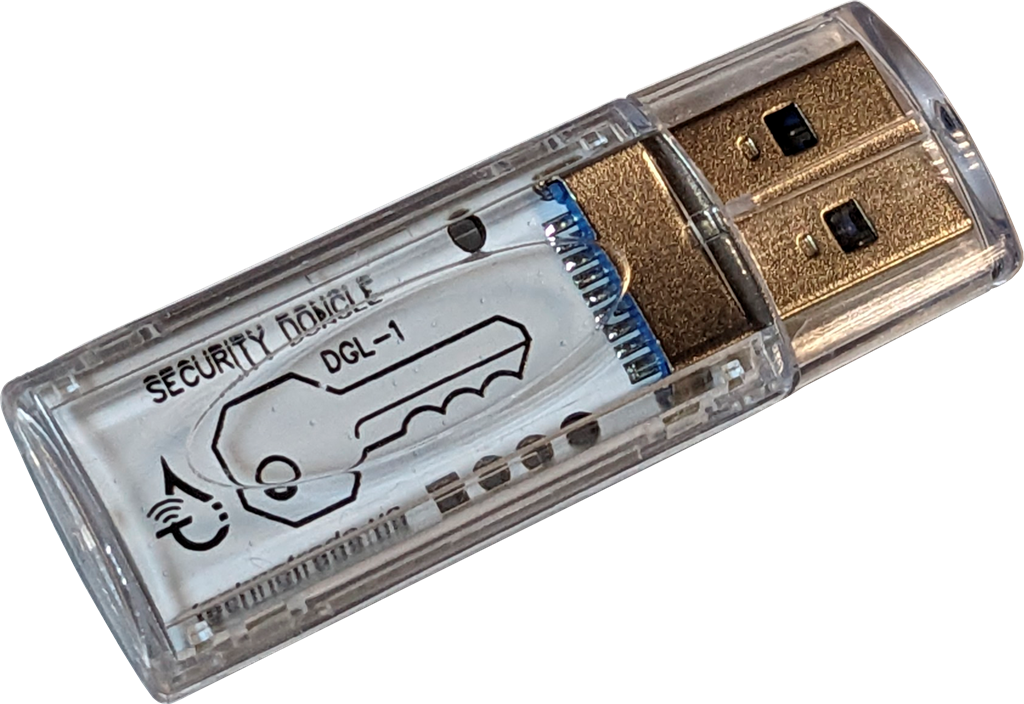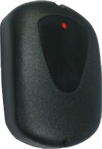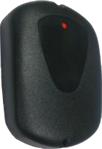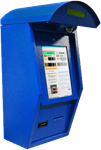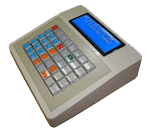Software protection dongle DGL-1
Software protection dongle DGL-1 is a compact USB device designed to reliably protect your software from unauthorized use.
With built-in software, the dongle provides unique identification and prevents tampering with hardware or software emulators. Using a public key, the developer can verify the authenticity of the dongle, ensuring that only licensed users have access to the program.
The dongle supports the RSA algorithm for working with private keys, making it a powerful tool for protecting intellectual property.
The DGL-1 dongle is supplied with software development kit (SDK) for developers, who want to implement it in their software. This SDK includes a description of the communication protocol, API for different programming languages and a demonstration application on how to use the dongle.
Typical usage scenario #
Key generation: developer creates two types of cryptographic keys: a private key for their application and a private key for a series of dongles. These keys are unique and provide the basis for secure data exchange.
Presence and authenticity verification: upon launch, the application uses the dongle's public key to verify its presence and authenticity. This ensures that the software only works with an authorized DGL-1 device, preventing unauthorized use.
Permissions retrieval and verification: after successful verification, the application reads a special file (this can be XML or JSON) from the dongle that contains information about the user's permissions. This file is signed with the application's private key, ensuring its integrity. The application verifies the signature and applies the permissions defined in the file, providing granular control over functionality.
By using an asymmetric encryption algorithm, the DGL-1 dongle opens up additional possibilities for protecting your software. Some critical parts of the application, such as resources or individual modules, can be encrypted with a public key at the build stage. At runtime, when the application needs to access this protected data, it can use the dongle's functions to securely decrypt it. This provides a reliable level of protection, since even if an attacker obtains a copy of the application, he will not be able to access the encrypted components without an authorized dongle.
This process provides multi-layered protection: dongle authentication, integrity of permission data, and access control at the application level. DGL-1 allows developers to effectively protect their applications from piracy and unauthorized use, while providing flexibility in managing licenses and functionality.
Ask YOUR questions about
"Software protection dongle DGL-1"
Other products of section:

|
ISPD-485 device for RS-485 interface isolation and surge protection
ISPD-485 device is used for isolation and surge protection of RS-485 interface lines. The ISPD-485 is installed in the RS-485 line to protect equipment from high-voltage impulse interferences caused by: lightning discharges, radiation from industrial equipment, various electromagnetic fields.
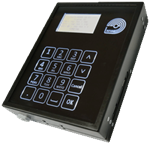
|
Pinpad self-service terminal for petrol stations
Self-service terminal Pinpad is a terminal intended for provision of self-service at petrol stations. It has wired/wireless communication and is equipped with a built-in display, keyboard, RFID-reader (Mifare/Em-Marine standards) and Wi-Fi module, which allows it to be used for following purp
